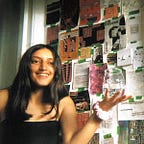Ideas and aims:
I was interested in visually exploring the communication between people and machines. I went about this by recording conversations between myself and Siri and then used the sound data from these conversations, to influence my typography and further visually capture the interaction.
Choice of sound:
I chose to explore my conversations with Siri, because I was interested in the speech abnormalities in the conversation and how Siri provides unconventional answers, that a person would never say, ie.’I never rest. But thanks for asking.’
Using Nodebox:
Creating my typeface in Nodebox, allowed me to have more freedom and control to experiment and change the shapes in the code. I could also experiment more with the visuals In illustrator, as they could be exported as SVG’s.
Visual outputs:
I presented my experiments in a series of posters, with the left half of the poster representing my speech/question to Siri and the other half representing Siri's response. I decided to keep each conversation/poster in the same typeface, as by representing my data in the same format, I was able to provide a more accurate comparison of the sounds.
I experimented with illegibility, and how many points I needed to plot onto my type to make it legible. I also considered how loud the sounds could be before they became too illegible, and how my visual choices such as shapes added to the legibility, I found the square experiments expanded more, making them less legible than the polygons. I also added a caption of what was said, I felt that this added a needed context and possible entry point into the poster.
Conclusion:
Overall I found these experiments interesting to explore, as I was able to visualise a communication between myself and Siri where the answers were very unexpected and unlike that of what a person would respond.
For my future experiments, I would like to further explore how I can represent a sound, by creating another interactive experience, which uses real-time data. I could perhaps look at more abstract visualisations which represent certain sounds, such as using shapes to represent sounds.
